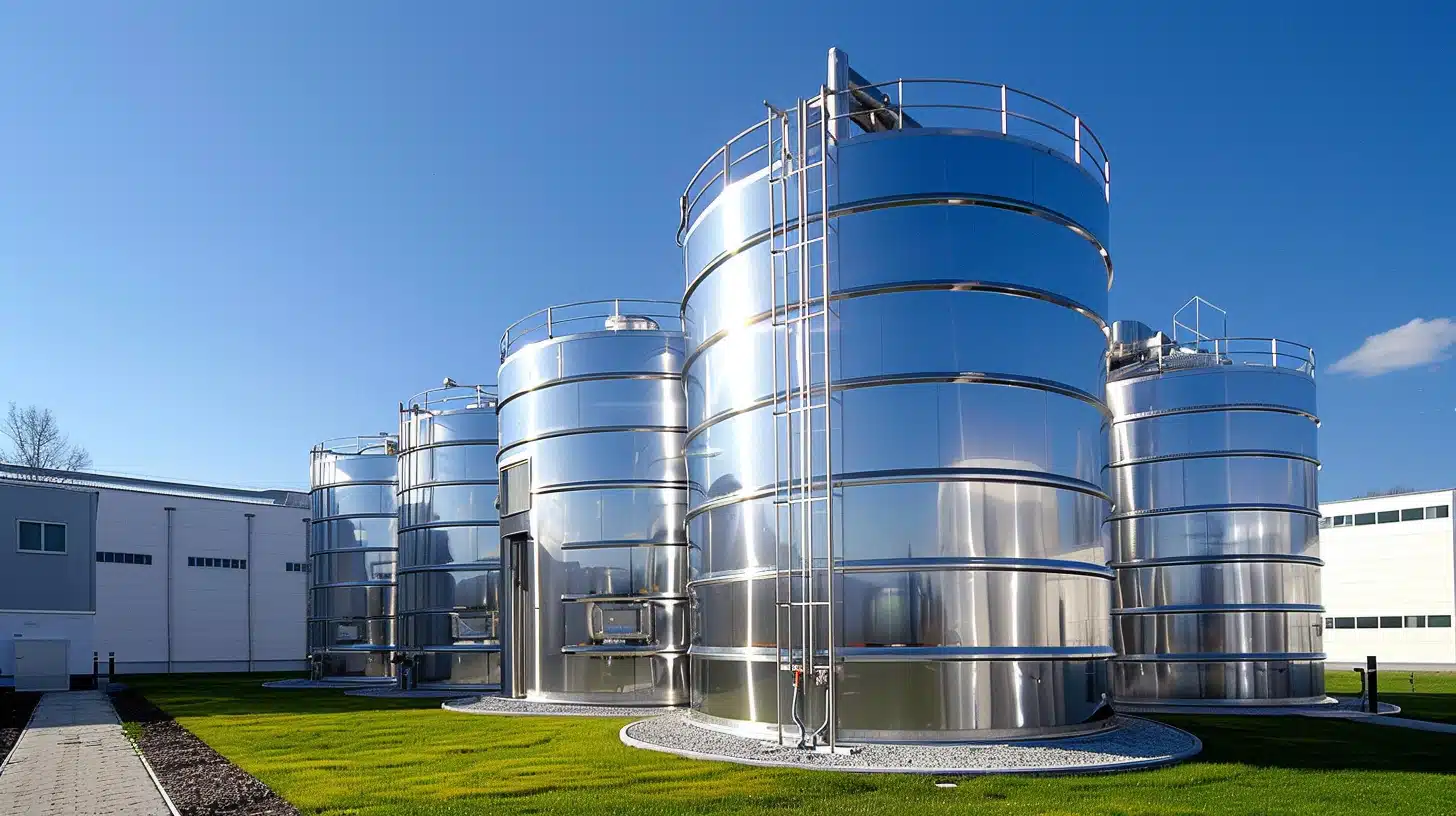What Should I Do If My Water Tank Is Overfilling?
If your water tank is overfilling, it can result in unnecessary water waste, potential damage to the tank, and even potential flooding problems. The overflowing is often caused by issues with the tank’s float switch or inlet valve which might be faulty or incorrectly set.
The first step in fixing excessive tank filling is to determine the cause. If it’s the float switch, it might be jammed or physically damaged.
A stuck float switch will keep signaling the pump to supply water, thereby causing the tank to overflow. Visit The Water Tank Factory for more tips and suitable water tank designs with effective float switch mechanisms.
If the issue lies with the inlet valve not shutting off water supply correctly, you may need to replace or adjust the valve to ensure it properly interacts with the float switch. Regular maintenance of your tank’s components can also go a long way in preventing such issues.
In any case, calling on professional help is always a smart choice to troubleshoot and solve the issue. If the problem persists, a professional assessment can help you decide on a suitable course of action, which might include replacement or major repairs of your water tank.
Cause of Tank Overflow
If your water tank is overfilling, it’s likely due to a malfunctioning float switch or fill valve. The water level in your tank is regulated by these components and, when functioning correctly, they prevent overflow by controlling the influx of water.
- Faulty Float Switch: A float switch triggers the fill valve to stop water intake when the desired level is reached. If this component has failed, it can’t send the signal causing an overfill.
- Damaged Fill Valve: The valve controlling water flow can break from wear and tear. When this happens, water continues to pour into your tank leading to overflow.
Your priority should be to fix or replace these parts; it’s a crucial step towards preventing further damages due to tank overflow. By appropriately solving these issues, you can lessen the chances of an even bigger problem such as tank failure.
Remember that A study suggests that water heater tank failures account for 69% of all water heater failures, often due to problems such as overfilling and pressure issues.
Detecting Overflow Symptoms

Early detection of overflow symptoms in your water tank is crucial. An overfilled water tank can lead to unwanted leaks, waste of resources, and even potential damage to your property. Identifying the signs early can prevent these challenges.
The Consumer Product Safety Commission notes that there are nearly 1,000 fires each year involving liquid fuel-burning appliances, which includes water heaters where overfilling could be a factor. Hence, you must maintain vigilance regarding your water tank’s condition.
Tank manufacturers adhere to strict regulatory codes such as ASME, API, and AWS to ensure the safety and reliability of water tanks. These standards regulate the design, construction, and maintenance of tanks to prevent issues like overfilling, which can lead to dangerous incidents such as fires or leaks, ensuring consumer safety and compliance.
There are several key symptoms to look out for if you suspect an overfilled water tank. Observing these signs will help ensure a safe and properly functioning system.
- Noisy operation: Unusual sounds from the water tank might indicate an overflow issue.
- Leaky valves: Leakage around the pressure relief valve or drain valve is another clue.
- Inadequate heating: If your water isn’t heating properly, this could signal that the tank is too full.
An understanding of these symptoms not only sustains your safety but also helps maintain the longevity of your appliance. Continual monitoring of these signs in regard to your system aids in preemptive maintenance and prompt troubleshooting.
Regular Overflow Prevention
Leaks and overflows often result from unchecked tank use. Maintaining a healthy water tank involves regular inspections to notice early signs of overflow. Consistent checks can save you from costly repairs and potential damage.
Also, consider installing an automatic shut-off device. This device works by monitoring the water level in your tank and automatically shuts off the water supply when it reaches a certain level.
An expansion tank should also be part of your water system. The fact is that overfilling a tank can cause thermal expansion. Without an expansion tank, this can increase pressure by up to 150 psi, whereas most residential systems are designed for 50 to 100 psi.
| Tank Maintenance | Prevents |
|---|---|
| Regular Inspections | Tank Overflow |
| Automatic Shut-off Device | Water Wastage |
| Expansion Tank Installation | Thermal Expansion |
| Key points: Maintenance To Prevent Overflows and High Pressure | |
To avoid dangerous pressure levels or severe damage, mitigate your risk by conducting frequent maintenance, utilizing automatic devices, and considering expansion tanks.
Steps to Limit Overflow
If your water tank continues to overfill, it’s important to identify the root cause. Ignoring this issue can lead to water damage averaging around $4,444 per incident after the deductible has been paid. Let’s delve deeper into practical steps you can take to limit this overflow.
Check The Float Valve
The float valve controls the water level within your tank. If it’s defective or set incorrectly, it cannot perform its job, causing an overflow. Check whether or not it needs adjusting or replacing.
Inspect The Overflow Pipe
Your tank should be equipped with an overflow pipe to handle any excess water. Ensure this pipe isn’t blocked and is adequately sized for your tank capacity.
Consider Tank Size
If your overflow is due to high water usage or demand, you may want to evaluate the size of your tank. A bigger tank might be needed if your household uses a significant amount of water.
Avoid Delayed Repair
Addressing overflow issues promptly minimizes the risk of damage and associated high costs. Remember, prevention will always be better – and cheaper – than cure when dealing with water system issues.
Water Tank Repair Options
When your water tank overflows, prompt action can prevent further damage. Checking the inlet control valve for malfunctioning and tightening connections are measures you could take.
Cleaning out the water tank float can also be a viable solution. Sediments and debris can hinder its functionality, so frequent cleaning ensures its operational efficiency.
- Hire professionals: For complex faults that you can’t handle, call on professionals to address the issue. They have the necessary tools and expertise.
- Replace problematic components: If some parts of your water tank are damaged beyond repair, you should consider a replacement. Check with your supplier for compatible parts.
- Install a tank overflow alarm: An audible or visual alarm can help notify you when the water level exceeds the safe limit.
You should monitor your water tank regularly to catch any issues early. Detecting problems and seeking repair options right away is more cost-effective than dealing with damages later.
Professional Assistance Considerations
When your water tank is overflowing, it may be time to seek the help of a professional plumber. They have comprehensive knowledge about different tanks and their mechanisms, allowing them to identify and fix issues efficiently.
Before contacting a professional, consider your budget. Depending on the problem’s severity, the resulting cost can vary substantially. For example, The cost of installing an expansion tank to prevent overfilling-related issues is approximately $200.
- Experience: Choose a plumber who has a broad range of experience with various kinds of problems in water tanks.
- Credentials: Check if the plumbing service provider is certified. This guarantees that they adhere to industry standards and regulations.
- Pricing: Negotiate upfront pricing to avoid surprise charges later on.
If you follow these guidelines when choosing a professional plumber, you ensure that your water tank issue is dealt with effectively and efficiently. Always remember that preventing overfilling-related problems is preferable than fixing them after they occur.
Preventing Future Overflows
Overflowing can significantly interfere with the efficiency of your water tank. It is a nuisance that leads to wasted water and, in extreme cases, can cause property damage.
Most importantly, overfilling can shorten the lifespan of a water heater, which typically ranges from 8 to 12 years for a traditional tank-type water heater. This calls for immediate and effective solutions to prevent future incidents.
Maintain Regular Inspections
Regular inspections are a crucial step in preventing overflows. These examinations help pin-point issues like malfunctioning valves or water leaks before they escalate into bigger problems.
Install Overflow Alarms
Overflow alarms are devices designed to alert you when the tank reaches its capacity. By installing these subtle instruments, you may avoid overflows and their accompanying troubles.
Use Automatic Shut-off Valves
An automatic shut-off valve works by stopping the flow of water once it reaches a certain level. It’s an effective solution to prevent accidental overflows.
Check Your Pressure Relief Valve
A faulty pressure relief valve is often at the core of most overflow incidents. Therefore, always ensure this component is functioning correctly in order to maintain efficient operation.
Consider Expert Services
If you’re unsure about handling these steps by yourself, consider seeking expert services. A professional plumber will not only fix existing issues but can also provide advice on how to avoid future overflows.







